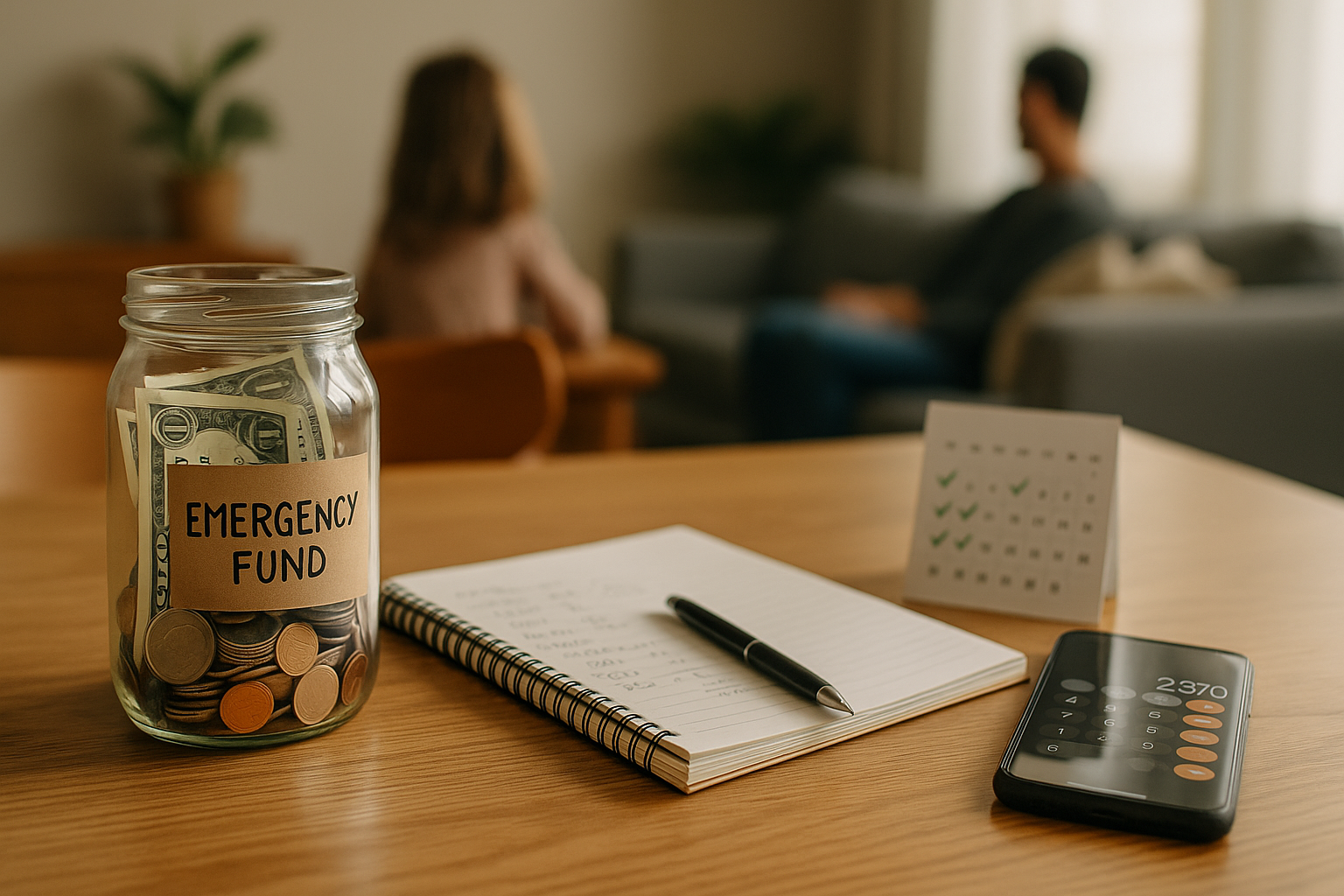Life happens—job changes, surprise repairs, medical bills. A well-built cash cushion turns crises into inconveniences. Use this practical guide to set up rainy day savings with clear targets, smart storage, and simple routines. These emergency fund tips are designed for real families and focused on long-term household financial safety.
What an Emergency Fund Is (and Isn’t)
- It is cash for unplanned, essential expenses: housing, utilities, insurance deductibles, medical, car repairs, basic groceries.
- It isn’t for planned costs (vacations, holidays) or discretionary upgrades (new phone, decor). Those belong in sinking funds.
Goal: Access within minutes or days—no market risk, no penalties.
How Much Should You Save?
Pick the tier that matches your situation and build up over time.
| Tier | Target | Best For |
|---|---|---|
| Starter | $1,000 – $2,500 | Immediate buffer while paying down high-interest debt |
| Core | 1 – 3 months of essential expenses | Dual-income households, stable jobs |
| Robust | 3 – 6 months (up to 9–12 for variable income) | Single-income, freelancers, commission-based, caregivers |
Quick math: Add rent/mortgage + utilities + insurance + groceries + transport + minimum debt + childcare. That total × months = your target.
Where to Keep It (Safety + Yield)
- High-yield savings account: FDIC/NCUA-insured, quick transfers, decent interest. Ideal for most families.
- Cash management or money market account: Competitive rates with check/debit access (confirm insurance coverage).
- Short CD “rungs” (ladder): For a portion you rarely tap—stagger 3–12 month CDs while keeping part in savings.
Avoid: Stocks, long-term CDs with penalties, or accounts that take days to access.
Build It in 30 Days (Then Keep Going)
- Open a dedicated account. Name it “Emergency Fund—Do Not Touch” to reduce temptation.
- Automate a weekly transfer. Even $25–$50 builds momentum. Schedule it the day after payday.
- Capture “found money.” Tax refunds, bonuses, marketplace sales, unused subscription refunds—route 50–100% to the fund.
- Trim two categories for 60 days. Groceries/dining, subscriptions, or delivery fees; move the savings automatically.
- Set a mini target. Hit $500, then $1,000, then one month. Celebrate each milestone to stay motivated.
Make It Friction-Proof
- Separate banks: Keeping the fund at a different bank adds just enough friction to prevent impulse transfers—while still being accessible.
- Round-ups & rules: Turn on purchase round-ups or “save the change” features; add a rule to auto-transfer any checking balance over $X each Friday.
- Windshield, not rearview: If you withdraw for a true emergency, set a plan to replenish—e.g., 10% of each paycheck until the balance is restored.
What Counts as a Real Emergency?
- Yes: Job loss, medical bills, urgent home or car repairs, essential travel for family care, insurance deductibles.
- No: Sales, gifts, elective procedures, vacations, upgrades, routine maintenance you can plan for.
Decision test: “Is this necessary to keep our household safe, working, or insured this month?” If yes → fund. If no → sinking fund or wait.
Integrate with Your Budget
- Line item it: Treat the emergency fund like a non-negotiable bill in your monthly plan.
- Use windfalls wisely: 80/20 rule—80% to the fund, 20% for fun to avoid burnout.
- Revisit quarterly: If expenses rose (new rent, daycare), raise the target.
Family Safety Extras (Small Moves, Big Calm)
- Insurance check-up: Confirm health out-of-pocket max, deductibles, and renter/home/auto coverage—your fund should cover these.
- Go-bag finance: Keep a secure file with IDs, policy numbers, and account access instructions.
- Income buffer: If income varies, maintain a separate “one-month ahead” checking buffer for bills.
Troubleshooting & Momentum
- Can’t find extra cash? Pause one subscription, lower one utility (negotiate internet/phone), and meal-plan once per week—transfer the savings immediately.
- Debt vs. savings? Build a small starter fund ($1,000–$2,500), then focus on high-interest debt while trickling $25–$50/month into the fund.
- Partner buy-in? Name the money’s job: “This covers the furnace, not a future TV.” Clarity reduces friction.
Conclusion
An emergency fund is the calm at the center of your finances. Start with a small, fast win, automate the rest, and store it where it’s safe and reachable. With these emergency fund tips in place, your rainy day savings will protect your routine, your plans, and your family’s household financial safety—no matter what the weather brings.





